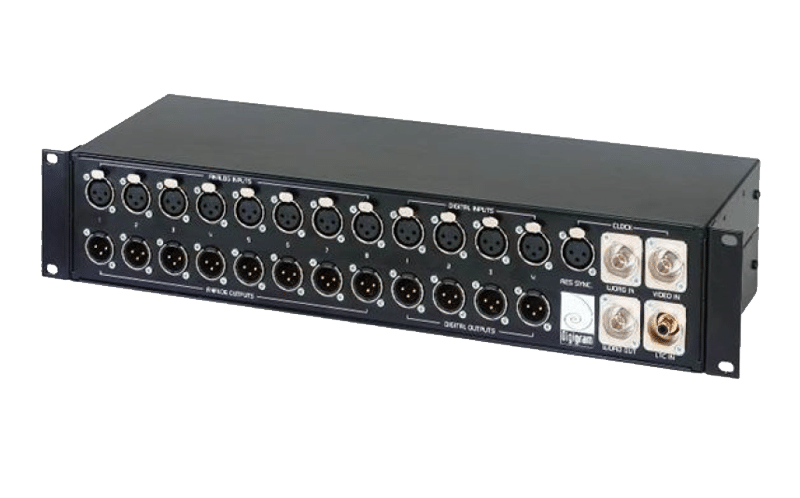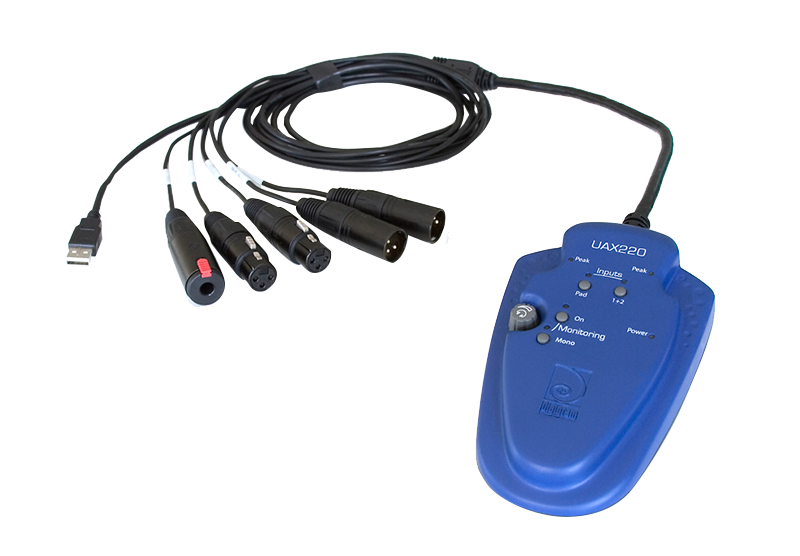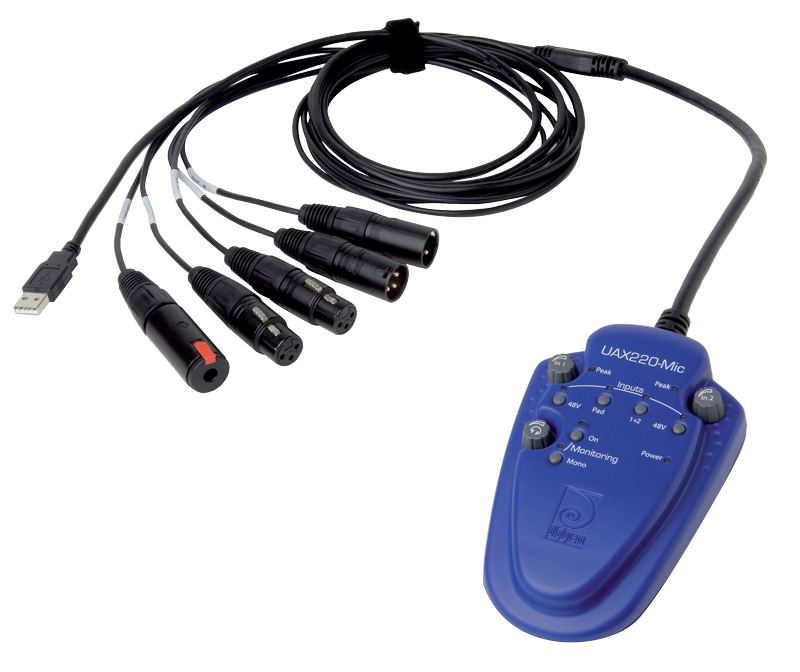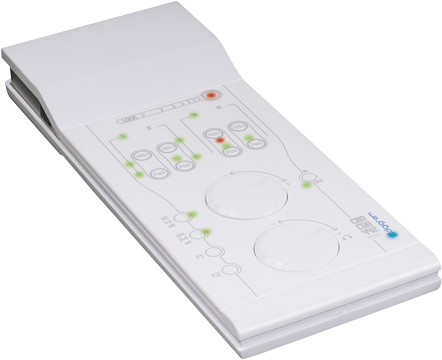The Four-channel professional USB Audio interface: Set, play, game
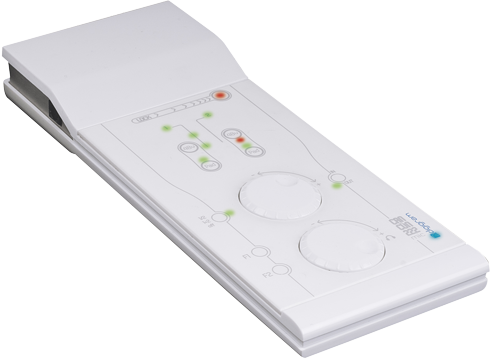
Cancun222-MIC
Zero latency, zero compromise, CANCUN is our high-performance sound card that embeds the essence of Digigram’s know-how for pristine live and broadcast applications.
High audio quality
Line/Mic inputs with high-quality preamps
Low latency
The speed of sound! Zero-latency embedded mixer ( → Round trip latency below 4ms)
Robust and Stable
Our ultra-robust design and high-end connectors fear no situations!
Best-in-class audio performances
(+55 dB gain, -105 dB THD+N, -126 dB EIN)
Key features
Ultra-high precision clock
→ 2/2 Analog and 1/1 AES-EBU I/Os in a high-density casing
Benefits
Record and edit Broadcast quality audio
Console class Mic
Carry a single toolbox
Standalone mode provides high-end
Secure your Live productions
Ultra-robust design and high-end connectors
Mic preamp and Analog / AES I/Os bridging
Specifications
Supported OS / Environments
Management: depending on the host operating system’s implementation of the USB Audio 2.0 specification. Microsoft Windows management is provided through DirectSound, Core Audio, WASAPI third-party ASIO driver.
Configuration
Size 254 mm x 96 mm x 36 mm
Operating: Temp / Humidity 0°C to +50°C / 0 % to 90 % (non condensing)
Connectors
Sub-D 25 pts (222-Mic) or 44 pts (442-Mic) for all analog and digital I/Os 6.35 mm jack for stereo headphone output
Neutrik XLR breakout cable included USB connector Standard, includes two A-type on PC side, one mini-B USB on card side
Audio I/Os
Analog inputs (mono) : 2 balanced analog Mic/Line inputs
Digital inputs (stereo): 1 AES3 stereo input
Switchable: 48V phantom power 7 mA Max on each input
Analog input gain:
– From 0 to 55 dB by 1 dB steps,
– switchable Pad 30.0 dB
Input sensitivity: 0 dBfs adjustable from -30 dBu to +25 dBu (Line) and -60 dBu to -5 dBu (Mic)
Maximum input level/impedance Line: +25 dBu / > 3.5 kOhms; Mic: -5 dBu / > 2 kOhms
Frequency response (A/D Input)
– at 48 kHz: 20 Hz–20 kHz +0/-0.5 dB
– at 96 kHz: 20 Hz–40 kHz +0/-0.6 dB
– at 192 kHz: 20 Hz–80 kHz +0/-2.0 dB S/N
Analog input, typical S/N: 108 dB unweighted and 111dBA @48 kHz THD+N
Analog input, typical < -105 dB unweighted and -107 dBA / 20 Hz-20 kHz, @48 to 192 kHz ref 1 kHz at –3 dBfs
Mic inputs E.I.N., typical < -128 dB / Zsource = 40 Ohms; Pad Off; gain 55 dB
_________________________
OUTPUTS
Analog outputs (mono) : 2 balanced analog Mic/Line outputs
Digital outputs (stereo): 1 AES3 stereo outputs
Maximum analog level/impedance at 48 kHz: +10 dBu / 2×33 Ohms
Frequency response
– at 48 kHz: 10 Hz–20 kHz +0/-0.1 dB
– at 96 kHz: 10 Hz–40 kHz +0/-0.3 dB
– at 192 kHz: 10 Hz–80 kHz +0/-1.3 dB
S/N Analog output, typical > 111 dB unweighted @48 kHz
THD+N Analog output, typical < -98 dB unweighted / 20 Hz-24 kHz @48 kHz to 192 kHz, ref 1 kHz at –3 dBfs
Headphones output (stereo)
– Dedicated output stage, > 10 mW from 32 to 600 Ohms 10Hz-20 kHz +-0.1 dB;
– Dynamic range: 93 dB @32 Ohms, typical
Audio Specifications
Audio formats: PCM 8, 16, 20, and 24 bits, full-duplex
Latency 3.4 mS
– analog-to-PC or PC-to-Analog (Windows 7 / 64 bits) 3.8 mS
– analog-to-MAC or MAC-to-Analog (Mac OS X 10.6.8)
Channel phase diff. (A/D and D/A) ± 0.2° (20 Hz – 20 kHz)
MIXER AND PROCESSING
AES/EBU-to-Analog Bridge In Stand-alone mode
Embedded Mixer Zero-latency headphone Mixer
Q&A
Sound cards
Which Linux Distribution are supported by ALP sound cards ?
ALP cards are supported under the following Linux distributions, from the mentioned versions:
- Ubuntu:
ver. 20.04 - kernel 5.15
ver. 22.04 - kernel 6.5 - Debian 11 - kernel 5.10
- Debian 12 - kernel 6.1
- RHEL 9 kernel 5.14
In case you need to run the driver under another Linux distribution, please contact Digigram to get
the source code. If you experience issues for compiling / running the driver on your Linux distribution, we
propose a service to provide you with the appropriate driver; please contact Digigram.
My sound card is not detected by Windows
Make sure that you downloaded the lasted driver on our website. Indeed, from time to time we have to make component updates that require a new driver.


